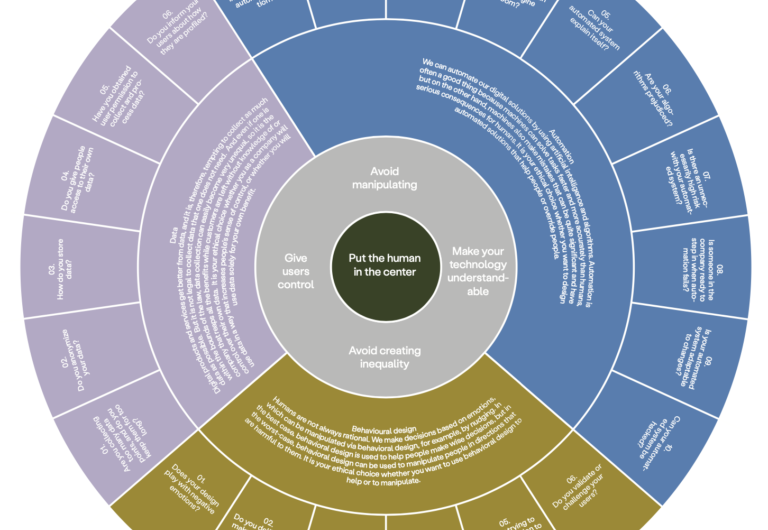The toolkit consists of several exercises, templates, and card sets that assist designers and innovators in the different phases of a design thinking process (empathising, defining, generating ideas, prototyping, and testing), namely…
- Intro: a guide to using the toolkit with a crash course on AI and machine learning;
- Generating ideas: a guide to think of user-centred solutions to challenges, a guide to identifying technology-driven and data-driven opportunities, and an 'AI prompt card deck for ideation' to gain insight into the opportunities of AI, but also the limitations of AI. The card deck always starts from the question 'What if ... for example, your user can interact with voice, you can respond to users' body, hand, and face movements? In this way, you can determine what added value AI can have for your product or service or for your organisation. The card set was further adapted and renamed to ‘AI Ideation Cards’.
- Idea selection and concept development: a matrix to map the found ideas based on desirability, feasibility, responsibility and viability, a template to sharpen your value proposition, a flowchart to quickly assess whether your idea is feasible and/or performable, a methodology (brainstorm and flowchart) to think about a task in a computational way.
- Prototyping and testing: a guide on how to talk to users and test your value proposition and integrate the user perspective into your AI concepts, and a guide to developing a prototype of your design and testing it with a group of users.
- Designing and implementing: a guide to identifying possible failures of the product or service to look at what needs to be optimised to be successful, an exercise to map user needs to machine learning models, a metric to evaluate the accuracy of the model, an overview of nine key challengesin designing intelligent, adaptive and (semi-)autonomous systems, an exerciseto identify extremes and polarities during design and where on the spectrum your product or service should lie, a template to map the consequences of your product or service.
- Outro: a list of additional resources that direct you to more information on AI and machine learning, and to design tools and games that focus on this topic.
The toolkit contains all the necessary material (templates, map set) to carry out the different steps of this design thinking process. All you have to do is download the toolkit and start working with your design team right away.




